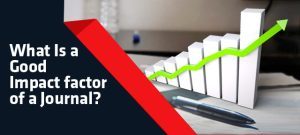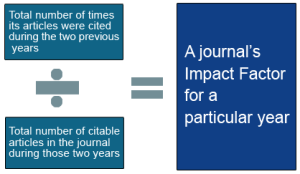Any researcher looking to publish an article gets tangled in the web of journal impact factor and how to select the best journal to target. While it is easy to know the impact factor of a journal, it is altogether a different challenge as to how to interpret this number. Here is an easy guide to journal impact factor and what it means.
What is the impact factor of a journal?
This is the easiest question to answer! The Journal impact factor is a measured frequency-based on citation numbers of articles from a journal in a particular year. First introduced by Eugene Garfield, the founder of the Institute for Scientific Information, the simple formula is Impact factor =A/B for any given year (X), where A is the number of citation of articles published in years (X-1 & X-2) by indexed journals during Year X; and B is the total number of citable items like articles and reviews published by that journal in the years (X-1 & X-2). Impact factors are calculated each year by Thomson Scientific for those journals that it indexes (it was 12,298 for 2017) and are published in JournalCitation Reports.
So, what are the caveats?
- Remember, the impact factor is always dated back 3 years; one cannot know the impact factor of the present year as it will come after 2 years.
- Impact factor analysis is limited to the 12,298 journals indexed for the JournalCitation Reports covering 27 research disciplines only. Impact factor can be calculated only after completing the minimum of 3 years of publication and therefore it cannot be calculated for a brand new journal
- The impact factor only denotes citation of journals and not individual articles That is done by other measures like the H-index.
How do we interpret the value of a journal’s impact factor?
This is where things start getting tricky! In most fields, the impact factor of 10 or greater is considered an excellent score while 3 is flagged as good and the average score is less than 1.
However, the impact factor is best read in terms of subject matter in the form of the 27 research disciplines identified in the JournalCitation Reports. Some science streams have higher frequencies of citation while some subjects like streams in humanities may have a lower frequency of citation.
The best means of judging a journal based on the impact factor is noting the comparative score of the journal with others in the same field. So, if a journal A has a score of (say) 5 while the next journal B has a score of 2, that is different from a journal C having a score of 10 while the next journal D has a score of 9. It is the relative score that matters while choosing a journal for publication.
In Conclusion
The impact factor of a journal, although the most credible metric for judging journals, must be properly contextualized. There are other factors too must be considered for articles published in any journal.





